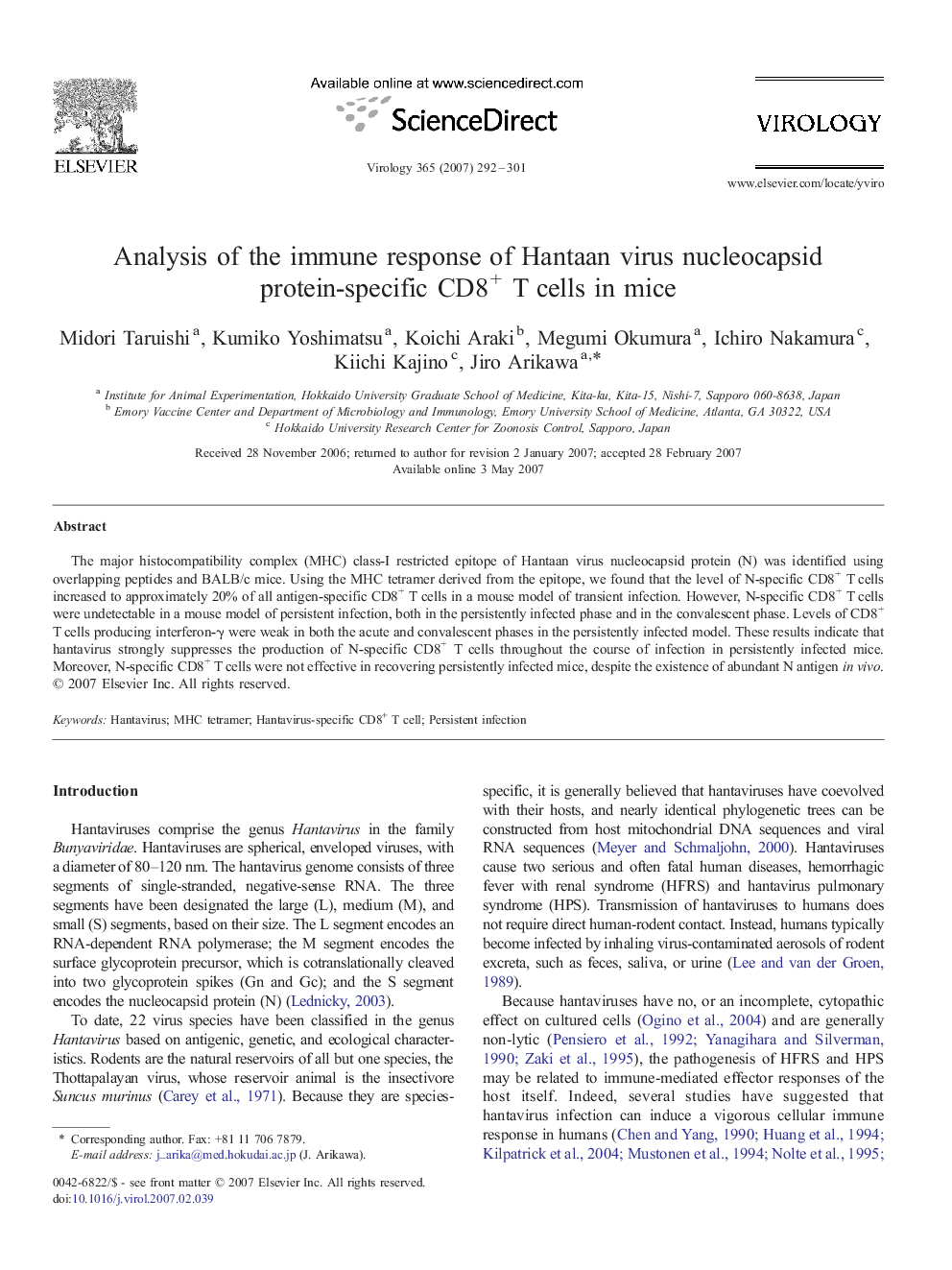| Article ID | Journal | Published Year | Pages | File Type |
|---|---|---|---|---|
| 3427250 | Virology | 2007 | 10 Pages |
The major histocompatibility complex (MHC) class-I restricted epitope of Hantaan virus nucleocapsid protein (N) was identified using overlapping peptides and BALB/c mice. Using the MHC tetramer derived from the epitope, we found that the level of N-specific CD8+ T cells increased to approximately 20% of all antigen-specific CD8+ T cells in a mouse model of transient infection. However, N-specific CD8+ T cells were undetectable in a mouse model of persistent infection, both in the persistently infected phase and in the convalescent phase. Levels of CD8+ T cells producing interferon-γ were weak in both the acute and convalescent phases in the persistently infected model. These results indicate that hantavirus strongly suppresses the production of N-specific CD8+ T cells throughout the course of infection in persistently infected mice. Moreover, N-specific CD8+ T cells were not effective in recovering persistently infected mice, despite the existence of abundant N antigen in vivo.
